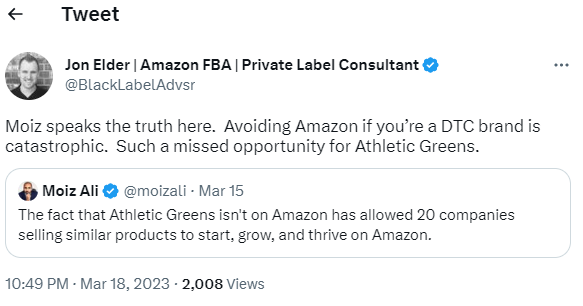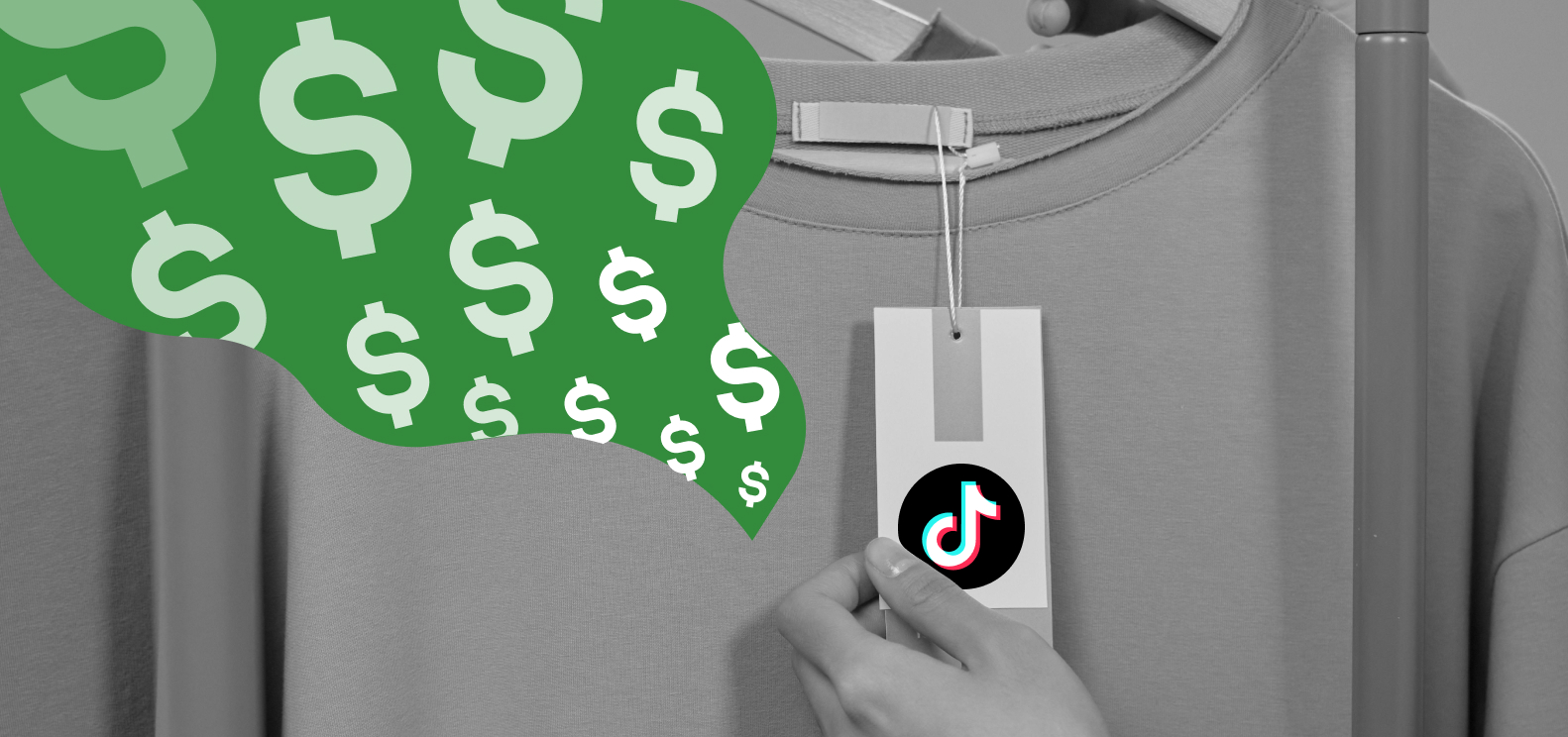Should Your DTC Brand Sell on Amazon: The Pros and Cons
What you need to know if you are looking to expand to Amazon

Amazon is by far the largest ecommerce company in the world by revenue (sorry Shopify). This means that the opportunities for you to scale up your ecommerce brand are endless. The world is your Amazon oyster.
Right? Well not quite …
It turns out that being so popular brings its own limitations.
Selling on Amazon is very different from Shopify, so here are some of the pros and cons you need to be aware of if you are looking to expand your brand to Amazon.
Pros

1. Increased exposure
Deciding to take the jump and selling your product on Amazon can significantly improve your chances of growing your sales. With 197 million consumers in 180 countries around the world and over 2.45 billion visits per month, this mammoth global reach makes Amazon the ideal platform if you are looking to scale up your brand internationally.
2. Easier fulfillment
A significant advantage of Amazon is Amazon FBA (Fulfillment by Amazon) which fully handles your inventory management and product fulfillment. It allows you to easily hand over the hassles that come with the process of picking, packing, and shipping your products. It is noticeably more sophisticated than Shopify’s fulfillment network.
Once you have an Amazon Seller Central account set up, you can also use FBA to store and fulfill your Shopify orders!
Keep in mind that using FBA comes with a slew of complications on the tax side. You can read more about that here.
3. Generates trust
Amazon is the most established and trusted ecommerce brand due to its reasonable return policies, speedy and affordable shipping, and great product reviews. Given a choice between buying from Amazon or from a website they’ve never heard of before, most will probably choose Amazon. It’s therefore the perfect landing place if you’re entering the market and looking to gain instant trust from your customers.
4. Sales tax is much easier
Since Amazon is a marketplace, they are responsible to collect and pay your sales tax for you (although you may still have to file sales tax returns in certain states). This significantly simplifies the sales tax headache that inevitably comes with selling online.
5. Demand Capture
One of the most important strategies of Amazon’s business model is demand capture—capturing a customer's intent to purchase a product as soon as they express interest in it. In order to make it easy for customers to buy the product straight away, Amazon uses tactics such as personalized product recommendations, customer reviews and ratings, fast and free shipping options, easy checkout processes, as well as targeted advertising and marketing campaigns, all with the aim of providing a seamless shopping experience. Taking advantage of Amazon's demand capture will help you convert customer interest into actual sales and drive revenue growth.
{{promo-strip}}
Cons
1. Increased competition
Amazon’s very low barrier to entry means that you’ll be competing against countless very similar online merchants. Amazon takes the cookie-cutter approach to the design and layout for every vendor, it’s a lot harder to stand out and would require optimization to rank in Amazon’s searches, which costs more. Shopify, on the other hand, allows for social media integration, gift cards, discount codes, and Google Ads credits.
2. Cannibalizing your brand

Can too much success be a bad thing? The answer could be yes if your rapid Amazon success cannibalizes sales from your Shopify site. Key tips to avoid this include:
- Control the Amazon price relative to the Shopify price to encourage your existing customers to buy directly from you e.g., by using promotions and coupons on your site.
- Control the Amazon product quantities and who is selling to protect the distribution of your product.
3. Cash flow delays
Amazon has its own payment processor and therefore controls when you receive your money—usually every two weeks—which is much longer than the cycle with Shopify Payments.
This could negatively impact your cash conversion cycle and cause you cash flow issues.
Considering 82% of failed businesses cite cash flow is a major factor, you want to make sure to plan around these delays. One option is to use a service like Payability to receive a percentage of your payout right after the order is shipped.
4. Access to your customers
Shopify provides you with invaluable customer data to help personalize email marketing campaigns, targeted discounts and improve shopping experiences. However, with Amazon, you don’t have this direct access to your customers. They view anybody who buys from you as an Amazon customer and not yours. Without this direct access to your customers, your next best option will be to run sponsored ads on the Amazon marketplace portal.
5. Amazon fees status: It's complicated
This is the biggest downside of selling on Amazon (way to bury the lead, right?).
While listing your products on Amazon is pretty easy, you'll be hit by all different types of fees, mainly sales commission, FBA sales fees, and advertising costs. These can vary depending on product category, size, advertising strategies, and how long your inventory is stored in the distribution center.
Let's break it down …
Monthly subscription: Start with the base, $39 per month for the monthly subscription. So far, easy.
Amazon selling fees: Now add in the selling fees. These vary based on product category but can be anywhere from 8%-45%. On average, it’s about 15% of your total revenue.
FBA fees: Let’s say you choose to use fulfillment by Amazon (FBA). You now also get charged for fulfillment and storage costs. These prices change according to differences in size, volume, type of product, and even the time of year. But, you essentially just increased your fees to about 25-30% of your total revenue.
Advertising fees: With Amazon advertising and we’re up to an additional 15%.
You get the idea.

Let's compare to Shopify’s fees:
- Shopify Basic: $29 per month, with 2.9% + 30¢ per online transaction.
- Shopify: $79 per month, with 2.6% + 30¢ per transaction.
- Advanced Shopify: $299 per month, with 2.4% + 30¢ per transaction.
Basically, when it comes down to it, Amazon fees are not necessarily higher than Shopify, just way more complicated. Determining the most cost-effective option would depend on the size and category of products you are selling. The real issue with Amazon fees is the complexity -Amazon’s fees are less transparent and harder to budget.
6. Managing your finances
A huge downside with Amazon’s data is understanding your actual revenue and fees. Amazon reports give you little transparency and financial visibility.
Using a robust ecommerce bookkeeping solution that uses AI accounting and AI bookkeeping like Finaloop, can help you track and understand all of these fees effectively and in real-time. This significantly reduces the uncertainty and lack of visibility inherent in selling on Amazon and also helps you calculate other key metrics like gross profit and Cost of Goods Sold (COGS). Having a better understanding of your financial health is the only way to make smarter decisions and really grow your profit.
Conclusion
Your decision on whether to expand to sell on Amazon will depend on your ambitions, market share, and size. Amazon’s unparalleled global reach is extremely attractive for a channel expansion, but you will have to settle with losing a bit of control of your DTC brand itself.
What is for sure is that, with 80% of sellers highlighting bookkeeping and accounting as their biggest Amazon seller problems, you need to make sure you have full access to your financials, so you don’t experience the same pain points.

That’s what we’re here for.
Accurate ecommerce books, done for you.
100% accurate ecommerce books, available 24/7.
Finally, you can focus on everything else.




